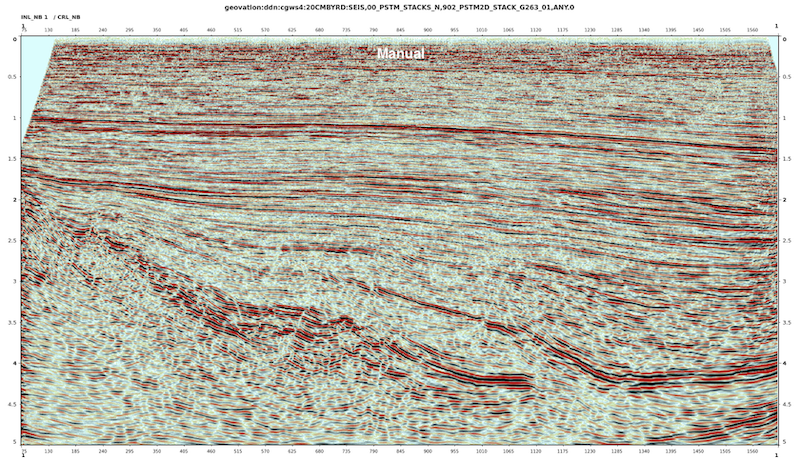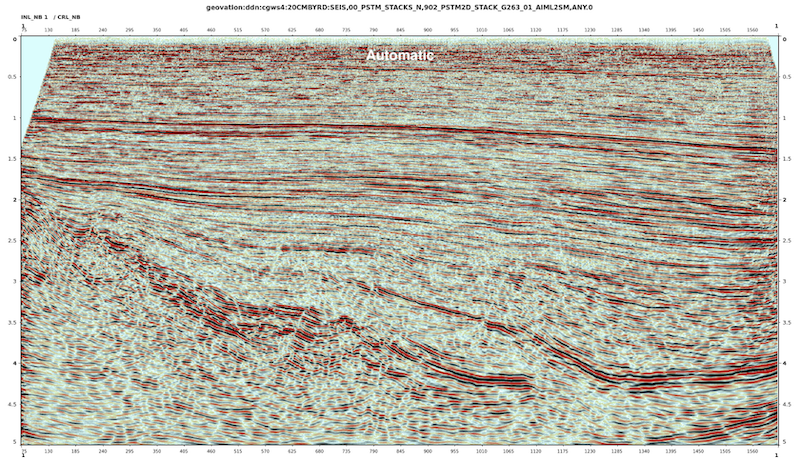Over the past year, our team at the Processing Division,GEOPIC has been tirelessly working on automating "Stacking Velocity Analysis" (SVA), a crucial component of the pre-stack processing workflow. And we have made a significant breakthrough !
Traditionally, SVA is a time-intensive task, requiring approximately one month of manual effort for an average-sized seismic processing project. Processing Analysts meticulously select time-velocity functions for CMP gathers in a regular grid. Our innovative tool, which integrates Deep Learning with physics-based constraints, reduces this effort to mere hours.
Here's an excerpt from the Executive Summary of the project.
In FY 2023-24, the Processing Division embarked on a transformative project titled Automatic Stacking Velocity Analysis Using ML to revolutionize seismic processing through the integration of cutting-edge AI and machine learning technologies. This initiative aimed to significantly reduce project turnaround times and enhance overall operational efficiency, adding substantial value by generating new intellectual property and incorporating advanced technologies into seismic processing workflows. The developed solution holds immense potential for elevating the quality and efficiency of seismic processing projects while delivering notable time and cost savings.
By leveraging sophisticated machine learning algorithms, the initiative yielded an auto-picker that autonomously generates stacking velocity fields, marking a substantial technological advancement over traditional manual methods. Velocity analysis, typically labor-intensive and time-consuming, now benefits from ML-driven automation. The new physics informed ML-based algorithm provides a robust initial stacking velocity model, serving as a robust baseline for expert analysts, thereby enhancing both precision and efficiency. Automating this critical aspect of seismic processing substantially reduces the time and effort required to produce accurate velocity models, accelerating project completion and enabling project teams to concentrate on higher-value tasks.
The project culminated in the creation of an innovative algorithm that autonomously computes stacking velocity functions for each Common Midpoint (CMP), effectively addressing challenges posed by noise and multiples. This algorithm leverages a High-Resolution Sparse Radon-Based Velocity Spectrum, which enhances the precision of velocity analysis, enabling detailed and accurate stacking velocity functions even in complex seismic environments. Additionally, a Deep Learning-Based Normal Moveout Tracker, leveraging a novel deep learning model trained on synthetic seismic data using unsupervised learning techniques, introduces a more direct higher-order coherence measure for deriving stacking velocity, surpassing conventional measures such as semblance and cross-correlation that can be ambiguous in the presence of noise. The algorithm also incorporates automatic Physics-Based Multiple Detection, further refining the velocity computation and ensuring reliable results.
Extensively tested on land and marine 2D datasets, the algorithm consistently delivers rapid results that align closely with traditional manual stacking velocity analyses, underscoring its efficacy and reliability in enhancing seismic processing workflows.
The images below present a comparison of stacks from a 2D line from a land survey. It showcases the stack generated using a manually picked velocity field alongside that produced by our automated solution. We have conducted similar tests across diverse geological settings, including the Eastern Offshore, Cambay Basin, and Frontier Basin, with consistently impressive results.
This advancement promises to significantly accelerate seismic data processing, potentially revolutionising internal practice.
The comparison reveals striking similarity between the "Manual" and "Automatic" stacks, underscoring the efficacy of our tool. At minimum, when integrated with our processing software, this innovation promises to provide an excellent initial velocity field, serving as a robust foundation for further refinement by processing analysts.
Developed entirely in-house, our tool is implemented in Python and harnesses the power of GPUs for optimal performance. We are currently pursuing patent protection for this groundbreaking technology while simultaneously developing plugins to seamlessly integrate it with our various internal processing software platforms.
This advancement not only promises to dramatically reduce processing time but also to enhance the overall quality and consistency of seismic processing, potentially setting a new internal standard for efficiency and accuracy in automatic velocity field generation.


